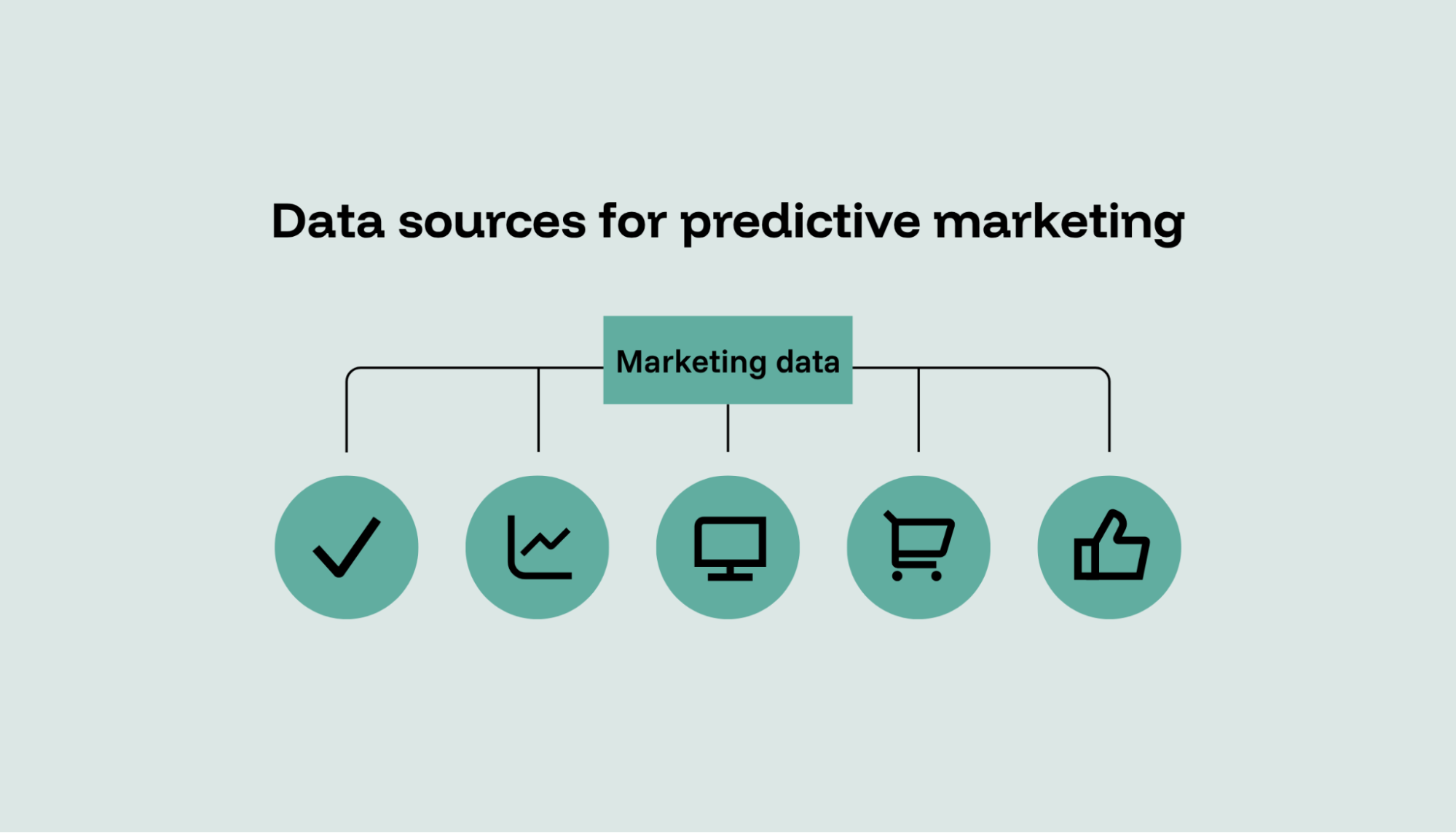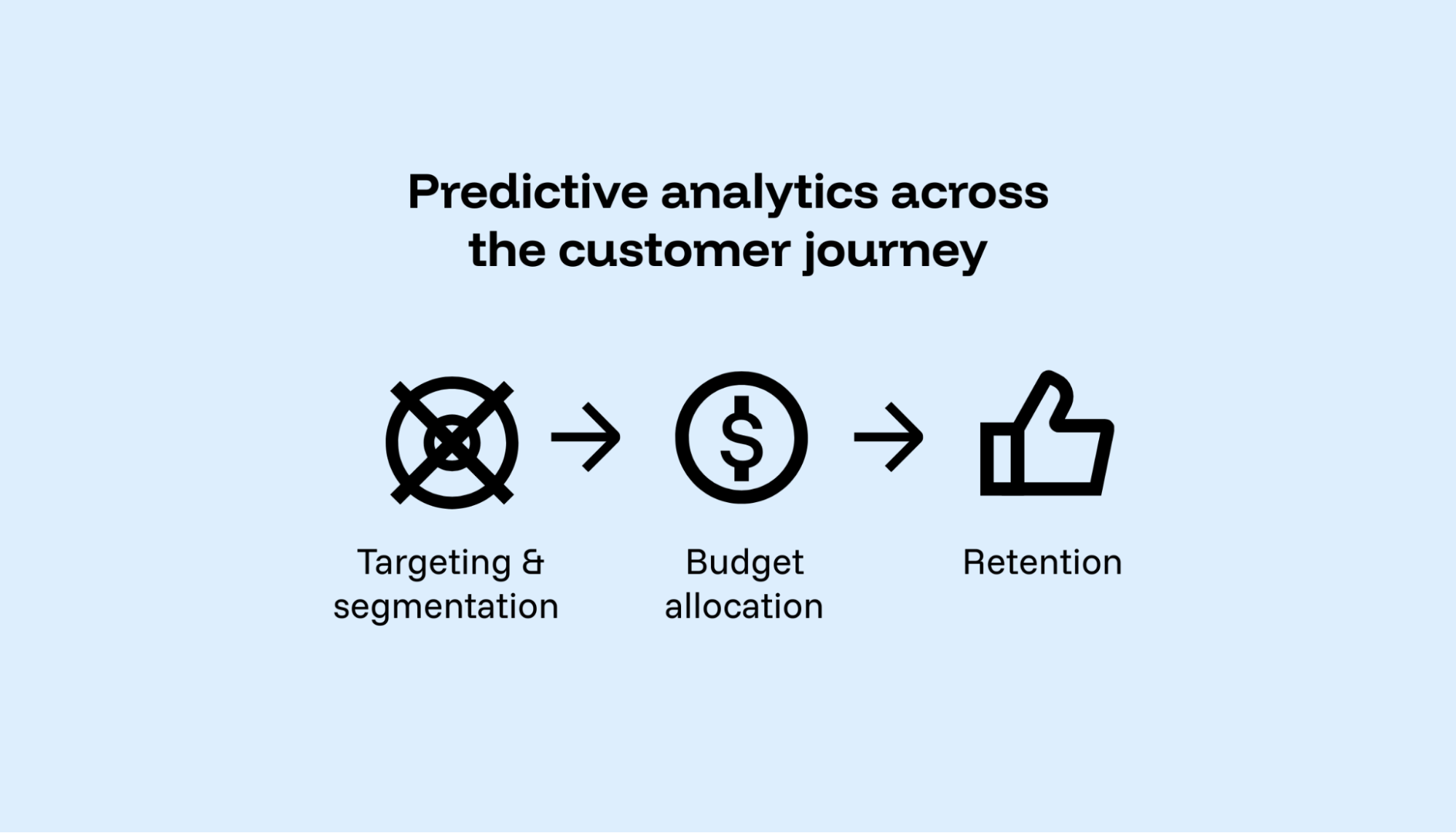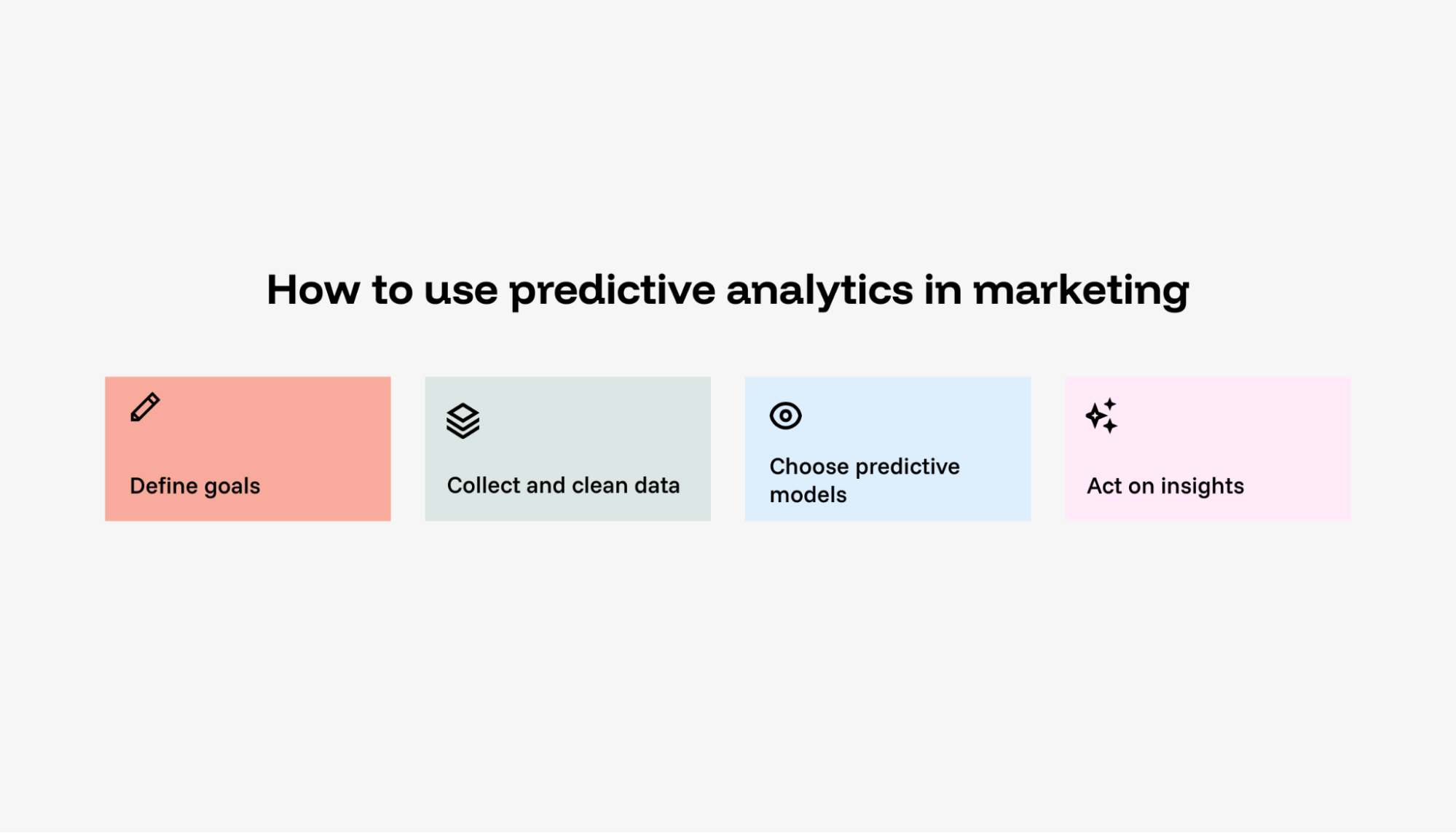-
Written by Christopher Van Mossevelde
Head of Content at Funnel, Chris has 20+ years of experience in marketing and communications.
A campaign tanks. Budgets are wasted. Customers drift away. Too often, these outcomes trace back to decisions made on instinct instead of evidence. In fact, Gartner reports that marketing analytics only influences 53% of decisions, leaving nearly half of strategies shaped without reliable data. Marketers still face the pressure to move fast, but rushing without data leaves teams open to costly mistakes.
Predictive analysis changes the story. By training models on historical data like purchase histories and layering in live inputs from CRM and ad platforms, marketers can forecast outcomes before they happen. That means spotting churn risks before they cancel, knowing which channels will deliver the strongest return and reaching the right customers with the right message at the right time.
By anticipating outcomes instead of reacting to them, marketers shift from hindsight to foresight. Predictive analytics marks a turning point in marketing effectiveness. It helps teams move from reactive reporting to proactive decision-making, where every action is grounded in evidence rather than instinct.
What is predictive analytics in marketing?
Predictive analytics uses data analysis and statistical modeling to forecast customer behavior and marketing outcomes. At its core, it means training predictive analytics models on historical data such as purchase histories or campaign performance, then enriching those models with live signals like CRM activity, engagement rates and clickstream data.
Different machine learning algorithms serve different goals:
- Regression models estimate future sales based on seasonality and past spend.
- Classification models flag customers with a high likelihood of churn.
- Clustering customer groups by purchasing behavior enables predictive segmentation beyond basic demographics.
As the model ingests more consumer data, its accuracy improves, allowing marketers to forecast future customer behavior with greater confidence.
Still, no amount of modeling can compensate for poor data. Predictions are only as strong as their inputs. In marketing, that means clean, connected data and models built on real performance signals.
What types of data power predictive marketing?
Predictive marketing strategies draw from several kinds of customer data points, but accuracy and consistency matter more than raw volume.

- Past purchases reveal basket size and buying cycles, helping predict customer lifetime value. Retailers use this to identify high-value customers for loyalty offers.
- Campaign performance data, such as click-through-rates and conversion rates, forecasts which marketing channels will deliver stronger results in future campaigns.
- Website and app behavior, such as drop-offs and product views, signal customer preferences, allowing predictive segmentation for retention campaigns.
- CRM records combine purchase histories and support tickets to predict churn risk for particular customers.
- Social activity, including comments and shares, highlights customer sentiment and future trends.
When data is inconsistent across sources, predictive analytics models produce inaccurate predictions. Getting that foundation right is what separates educated guesses from evidence-based strategy.
Which teams benefit most from predictive analytics in marketing?
It’s not only marketing that wins with predictive marketing work. Sales, customer support and product teams all benefit as well.
Marketing teams use predictive analytics models to improve campaign targeting and budget allocation, ensuring spend goes to the channels most likely to deliver strong marketing outcomes.
Sales teams often deal with fragmented CRM records, which makes it hard to predict customer behavior. When that data is centralized, predictive segmentation highlights high-value customers and reveals upsell opportunities.
Customer success teams rely on predictive analytics software to flag accounts with a high likelihood of churn, giving them time to launch retention campaigns that protect recurring revenue and improve customer satisfaction.
Product and growth teams analyze customer data to understand feature adoption, predict future trends and guide product roadmaps with accurate predictions instead of relying on lagging metrics or one-off surveys.
Why data-driven marketing wins over guesswork
Marketing has always used data, but not at the speed or scale we see today. In the 1980s and 1990s, teams relied on surveys, Nielsen ratings and transaction logs to understand customer behavior. These methods provided useful signals but were slow and limited in guiding marketing strategies.
With the rise of digital channels in the 2000s, CRM systems, clickstream analytics and ad platform metrics began delivering richer, faster insights. As a result, instincts alone became less reliable, and data-driven marketing became a practical necessity.
Today’s marketers run structured experiments such as A/B testing email subject lines or landing page designs to show what resonates in practice and ultimately shape future campaigns with hard evidence. Marketing experimentation builds confidence and helps teams decide whether to scale a headline variation that lifts click-through rates, a color scheme that improves conversion rates or an audience segment that delivers higher lifetime value.
Predictive analytics takes this a step further by training models on historical data. Purchase histories layered with live signals, such as site behavior, give marketing teams the power to more accurately forecast future events. The benefits are specific and measurable: fewer wasted impressions, more accurate segmentation, improved customer experience and strategies grounded in data rather than opinion.
What are some examples of predictive analytics?
Predictive analytics in marketing is most valuable when applied to day-to-day decisions. Instead of broad promises about “better results,” predictive analytics models give marketers evidence they can use immediately: which customers to target, where to spend and when to intervene.

Targeting and segmentation
Predictive segmentation goes beyond static demographics like age or location. It groups customers by behavior and purchase histories, making predictions about which prospects are most likely to convert. For example, a retailer might see that customers who buy running shoes in spring often purchase fitness trackers within 60 days.
By working from a centralized, analysis-ready dataset, marketing teams can identify these patterns and feed the insights into their campaign or CRM tools.
Budget allocation
Predictive analytics also guides where money should flow. A marketing team running campaigns across social, display and paid search may find that click-through rates are flat in social but rising in paid search. Predictive models use historical data to forecast future outcomes, showing that an extra $10,000 spent on paid search could deliver significantly more conversions than the same budget left in display ads. This gives marketers a defensible reason to connect budget allocation to real marketing outcomes instead of vanity metrics.
Churn prediction and retention
Predictive models can flag accounts showing early signs of churn. A SaaS provider might notice that customers submitting multiple unresolved tickets are far more likely to cancel within 30 days. By identifying these accounts in advance, the customer success team can trigger proactive outreach or send personalized messages to preserve recurring revenue and improve customer satisfaction.
How to implement predictive analytics in your marketing
Predictive analytics requires clear goals, reliable customer data and reliable models that guide real decisions. Here’s how teams can move from raw data to predictive insights.

Step 1: Define goals
Start by deciding what you want to forecast: churn, high-value customers or campaign revenue. Specific goals ensure your model answers the right questions.
Step 2: Centralize and clean customer data
Siloed data and inconsistent reporting are two of the biggest roadblocks. Marketers need a single, reliable dataset that brings together campaign metrics, CRM records and behavioral data from tools like Shopify, Google Analytics and TikTok Ads. When that data is normalized and aligned across sources, it becomes the foundation for trustworthy predictive modeling. From there, teams can feed the clean dataset into visualization or analytics tools such as Looker Studio or Power BI to explore patterns and build models.
Step 3: Choose a model
We defined common machine learning models earlier: regression, classification and clustering. At this stage, it’s about picking one that matches your goal. A sales forecast calls for regression, while predicting churn risk might use classification.
Step 4: Act on predictions
The final step is turning predictions into marketing actions. Predictive insights can show when to reallocate budget to a channel forecasted to deliver stronger ROI, or how much of an impact a creative change might have on conversions.
But prediction is only half the story. To turn projections into measurable outcomes, teams need to test whether predicted gains materialize. To know whether forecasts actually hold true, marketers need to validate results. That’s where advanced measurement frameworks, like marketing mix modeling (MMM), attribution analysis, and incrementality testing, come in. Together, these tools confirm which actions genuinely drive lift and which are simply noise. Closing the loop between prediction and measurement turns analytics from theory into proven growth.
FAQs: Predictive analytics for marketing, explained
Predictive analytics can sound complex, but it simply helps marketers act sooner and with more confidence. These common questions highlight how predictive analytics models work in practice and what they look like behind the metrics.
What is the main goal of predictive analytics for marketing teams?
The goal is to spot risks or opportunities before they appear in standard reports. Predictive analytics links forecasts to measurable impact, such as customer acquisition cost (CAC), lifetime value (LTV) or retention rates.
For example, a retailer might flag 1,000 customers who are about to lapse and send them a loyalty coupon. A SaaS team can use usage logs to identify accounts with declining activity and add extra support before cancellations happen. Predictive insights like these connect directly to business outcomes rather than abstract KPIs.
What is predictive analytics for B2B marketing?
In B2B settings, predictive analytics often powers lead scoring. Models analyze CRM activity, email engagement and deal history to generate a ranked list of accounts most likely to convert. Sales teams gain focus by prioritizing high-intent accounts, while marketing can double down on personas that respond fastest. For example, if decision makers with certain job titles consistently open product demos, predictive insights guide both outreach and content creation.
What are the four types of marketing analytics?
Marketers often hear these terms used interchangeably, but each type of analytics answers a different question:
- Descriptive analytics explains what happened, such as campaign click-through rates from last month
- Diagnostic analytics uncovers why, for example, a weak audience match or poor creative
- Predictive analytics looks ahead, such as forecasting churn probability or sales volume
- Prescriptive analytics suggests what to do, for example, shifting budget to paid search or launching a retention campaign
Which type of data source is often used for predictive analytics?
Predictive analytics works best when customer data sources are connected and consistent. Purchase histories, CRM records, site behavior, and social activity together reveal richer intent signals than any dataset on its own. What matters most isn’t the amount of data — it’s the quality, consistency and integration of those inputs.
Where Funnel fits
Predictive analytics points to what might happen next. Measurement confirms what actually drives performance. Funnel brings these two worlds together.
As part of its Marketing Intelligence Platform, Funnel’s Measurement suite combines marketing mix modeling (MMM), data-driven multi-touch attribution (MTA), and incrementality testing to deliver predictive insights grounded in evidence. These models forecast marginal ROAS and media saturation, simulate “what-if” budget scenarios and update daily as new data flows in.
Marketers use these always-on forecasts to plan smarter, allocate spend with confidence and validate impact at scale, closing the loop between prediction, measurement and action.
In short, Funnel transforms marketing data into a predictive advantage, giving teams the evidence to plan and the confidence to act.
-
Written by Christopher Van Mossevelde
Head of Content at Funnel, Chris has 20+ years of experience in marketing and communications.
